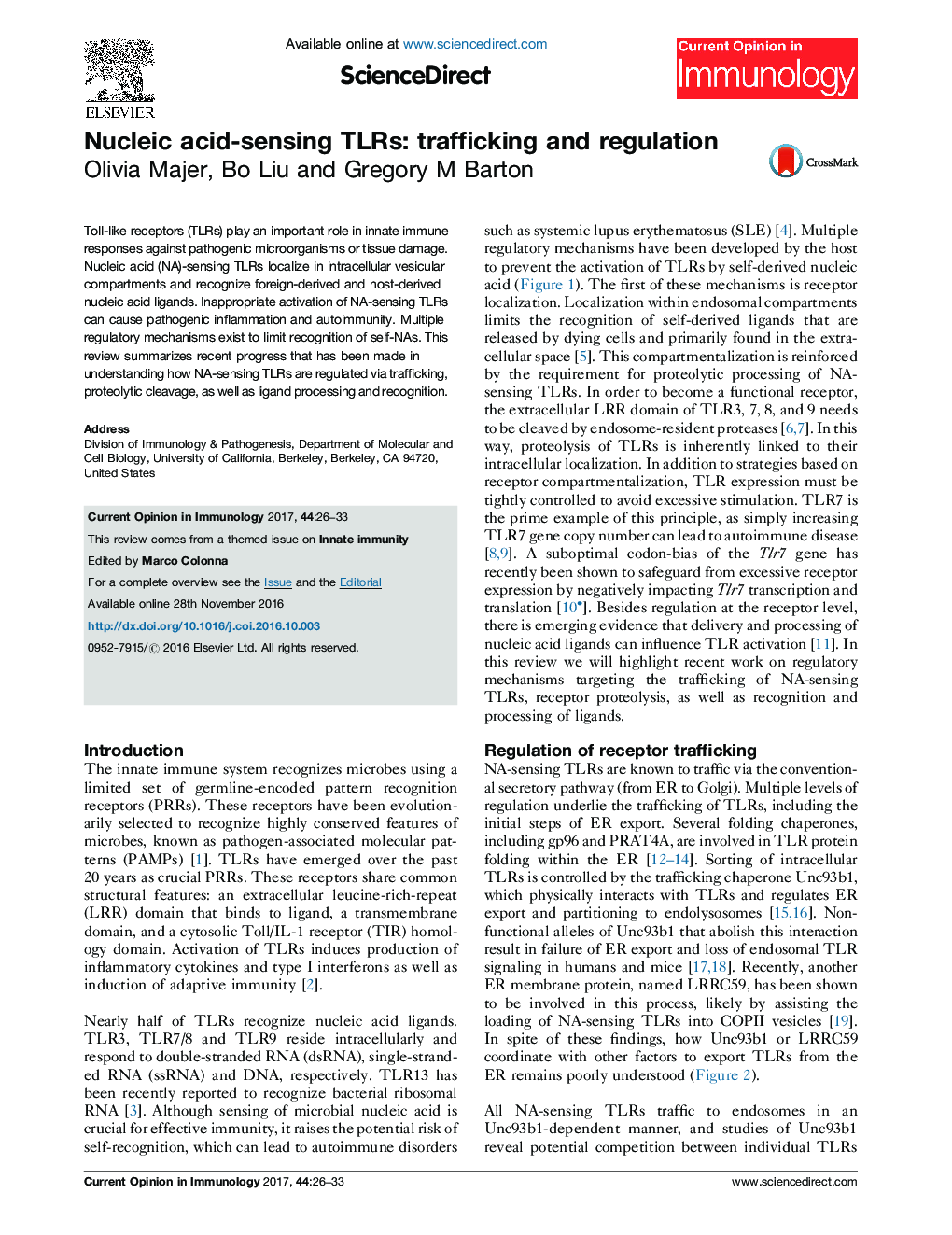| Article ID | Journal | Published Year | Pages | File Type |
|---|---|---|---|---|
| 5665769 | Current Opinion in Immunology | 2017 | 8 Pages |
â¢Nucleic acid-sensing TLRs are regulated at multiple levels to maintain immunological tolerance to host-derived ligands.â¢The recently solved crystal structures of TLR7, TLR8, and TLR9 provide evidence for the need of proteolytic processing and the mode of ligand binding.â¢TLR7 and TLR8 are dual receptors for single nucleosides and short ssRNA oligoribonucleotides.â¢The need for ligand processing to generate stimulatory nucleic acid fragments emerges as a new principle for TLR activation.
Toll-like receptors (TLRs) play an important role in innate immune responses against pathogenic microorganisms or tissue damage. Nucleic acid (NA)-sensing TLRs localize in intracellular vesicular compartments and recognize foreign-derived and host-derived nucleic acid ligands. Inappropriate activation of NA-sensing TLRs can cause pathogenic inflammation and autoimmunity. Multiple regulatory mechanisms exist to limit recognition of self-NAs. This review summarizes recent progress that has been made in understanding how NA-sensing TLRs are regulated via trafficking, proteolytic cleavage, as well as ligand processing and recognition.
